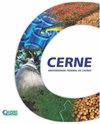Determining indicator plant species of Pinus brutia Ten. Site index classes using interspecific correlation analysis in Antalya (Turkey)
IF 0.7
4区 农林科学
Q3 FORESTRY
引用次数: 1
Abstract
Background: We performed a vegetation study in Antalya, where the Mediterranean climate prevails, in order to determine the indicator plant species of red pine ( Pinus brutia Ten.). Red pine can be widely distributed from sea level to 1200 meters. Its main distribution is in the main Mediterranean vegetation zone between 500-1000 meters. However, the variation of the habitat factors may be low in this range. Therefore, the productivity relationships of species such as red pine, whose sustainable use is important, cannot be directly explained by environmental variables. In such cases, it is important to determine the indicator plant species. For this reason, indicator plant species of red pine productivity (site index class I) were determined by using interspecific correlation analysis (ICA) in the study. Then, using principal components analysis, the relationship of indicator plant species with the variables of elevation, slope, aspect and soil depth was revealed. In the principal components analysis, the plant species that were determined as an indicator were also added to the graph as a class variable, and the effects of the variables on the indicator plant species were also investigated. Results: The results of the ICA showed that Dryopteris flix-mas (L.) Schott, Abies cilicica (Antoine & Kotschy) Carrière, Cedrus libani A. RICH and Colutea cilicica Boiss. & Bal. species were negative indicators of red pine productivity. On the other hand, Cistus creticus L. and Smilax aspera L. species were positive indicators of productivity Conclusions: Interspecific correlation analysis is a useful tool to determine the ecological properties of species that have a local distribution or a vertical distribution in a narrow altitude range. It also offers practical and effective results, especially for species with high commercial value such as red pine.毛松指示植物种类的确定。基于种间相关性分析的安塔利亚(土耳其)遗址索引分类
本文章由计算机程序翻译,如有差异,请以英文原文为准。
求助全文
约1分钟内获得全文
求助全文
来源期刊

Cerne
农林科学-林学
CiteScore
1.60
自引率
0.00%
发文量
2
审稿时长
6-12 weeks
期刊介绍:
Cerne is a journal edited by the Federal University of Lavras, Minas Gerais state, Brazil, which quarterly publishes original articles that represent relevant contribution to Forestry Science development (Forest ecology, Forest Management, Silviculture, Technology of Forest Products).
 求助内容:
求助内容: 应助结果提醒方式:
应助结果提醒方式:


